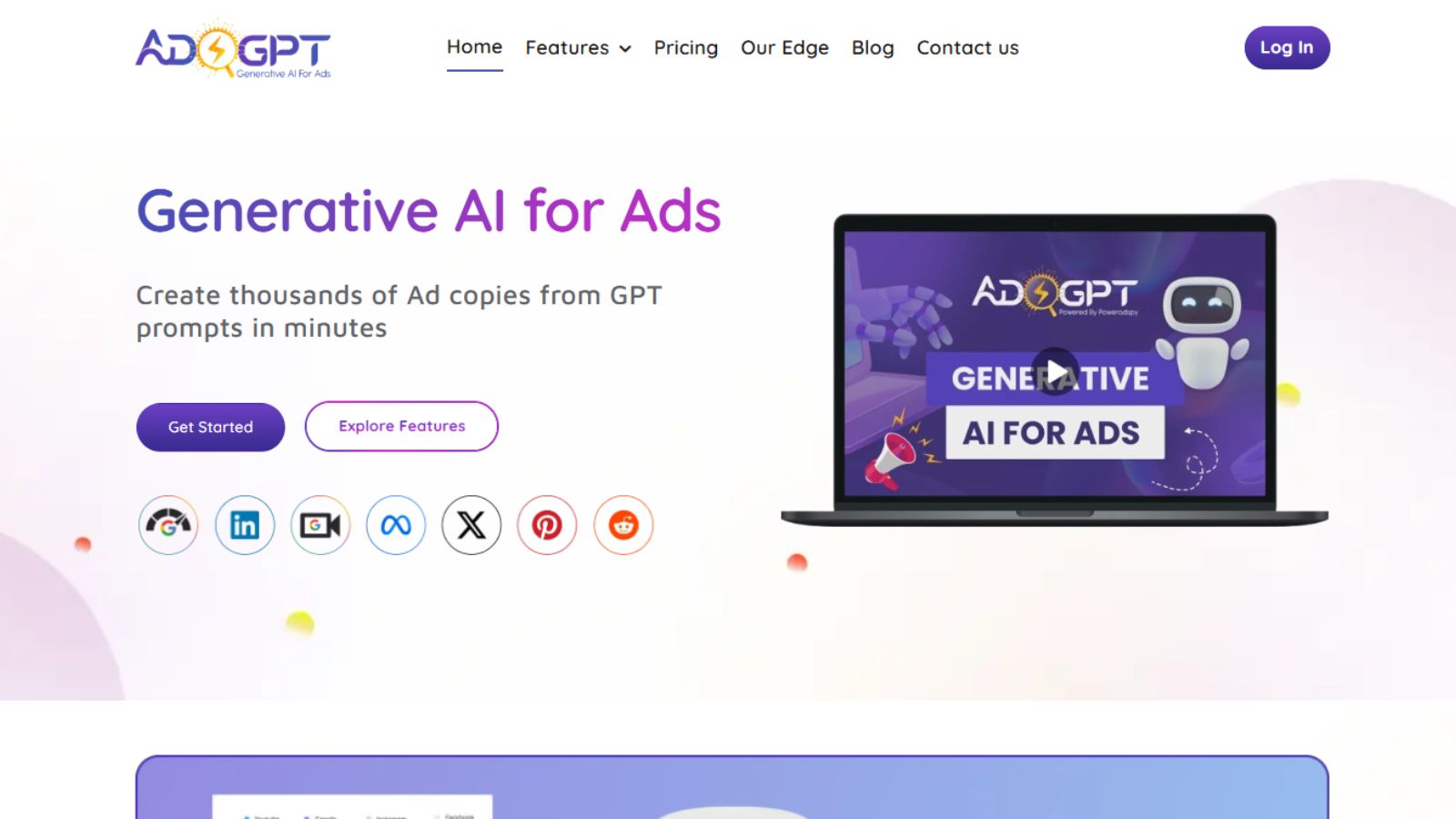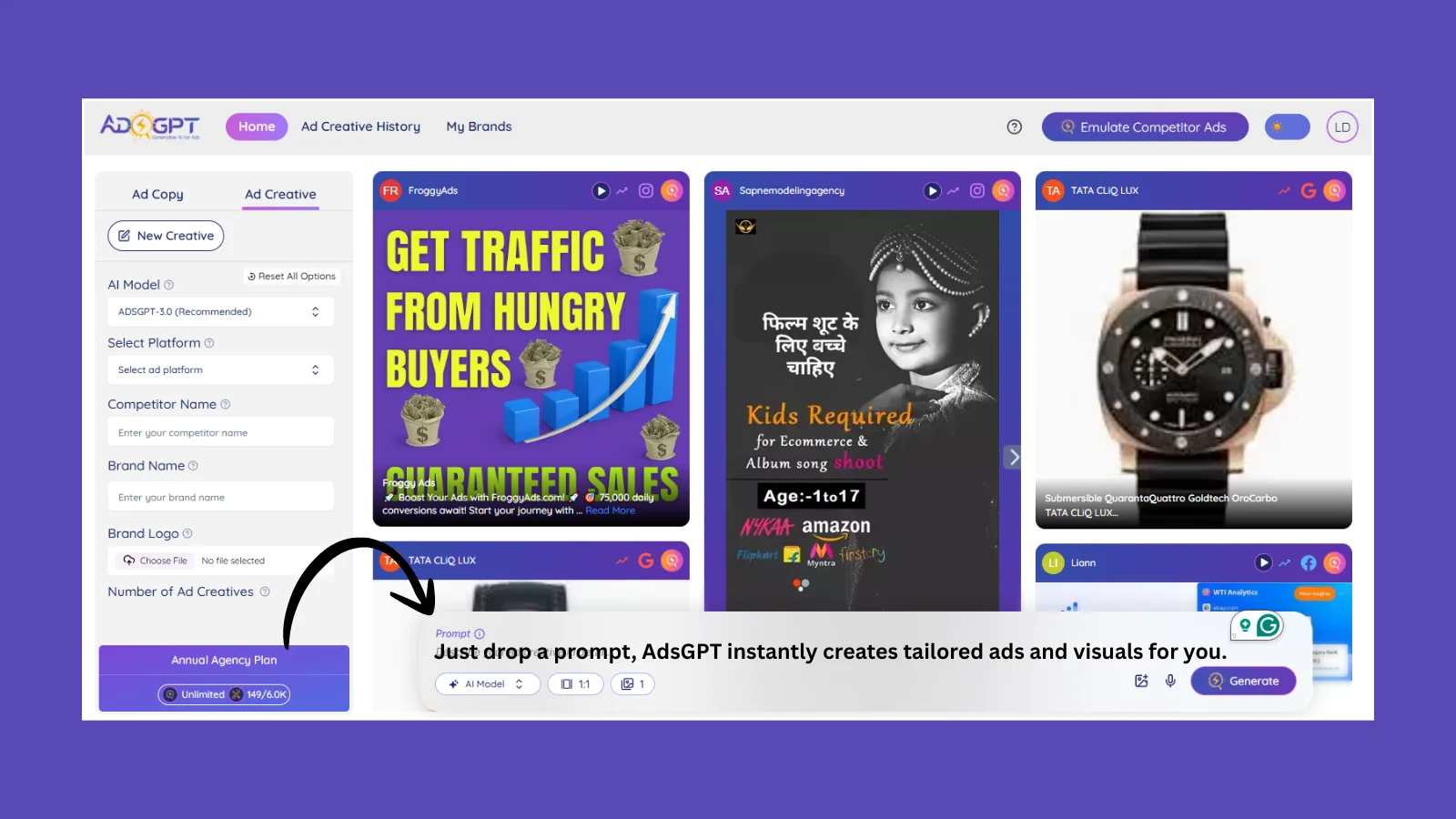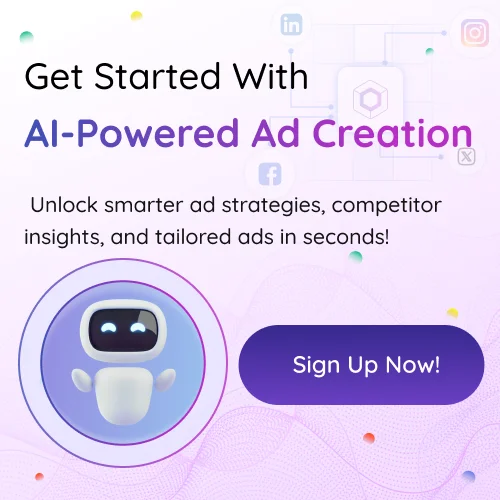
An AI image prompt is a carefully written description that tells an artificial intelligence system what kind of image to create. It’s a way to turn ideas and imagination into visuals, using only words. These prompts act like a blueprint, guiding the AI to produce images that match what you have in mind.
When done right, an AI image prompt can bring even the vaguest idea to life with rich details and style. Think of it as a bridge between your creativity and the AI’s ability to visualize it. Whether you’re imagining a dreamy landscape, a detailed portrait, or a scene from a fantasy world, a good prompt makes all the difference.
Listen To The Podcast Now!!
How To Write Good AI Image Prompts?
 Writing a great AI image prompt is like giving clear directions to a visual storyteller. The more vivid and structured your description, the closer the AI will get to bringing your idea to life. Whether you’re designing visuals for a campaign, social media, or product showcase, it all starts with the right words. At its core, a powerful AI image prompt includes four key elements that work together to shape the final output:
Writing a great AI image prompt is like giving clear directions to a visual storyteller. The more vivid and structured your description, the closer the AI will get to bringing your idea to life. Whether you’re designing visuals for a campaign, social media, or product showcase, it all starts with the right words. At its core, a powerful AI image prompt includes four key elements that work together to shape the final output:
1. Image Type
Are you looking for a high-resolution photo, a stylized illustration, a digital painting, or a 3D product mockup? Defining the type helps the AI choose the right visual approach.
2. Subject
This is the hero of your image. Whether it’s a tech gadget, a model, a pet, or a food item, be clear and specific about who or what should be in focus.
3. Background Setting
Set the scene, whether it’s a sleek office, wild jungle, cozy home, or a space station. The background brings your image to life with depth and context.
4. Style Or Mood
Describe the tone you want to convey. Think in terms of lighting (natural, moody, glowing), artistic feel (sketch, realism, vaporwave), or color palette (warm tones, pastel, monochrome).
Prompt Template
A [image type] of [subject] in [background setting], [visual style or composition].
The Tips To Level Up Your AI Image Prompts
Want to get the most out of your AI image generator? Here are some practical tips to help you craft prompts that deliver visually stunning, on-brand results every time.
1. Be Specific, Not Generic
Instead of saying “a man in a room,” go for “a middle-aged man in a minimalist home office with soft morning light.” The more you describe, the more control you have over the final visual.
2. Use Vivid Descriptors
Incorporate colors, lighting, textures, and emotion. Words like “golden sunlight,” “misty forest,” “vibrant graffiti,” or “elegant silk dress” help shape the atmosphere and visual impact.
3. Play with Composition & Style
Want a cinematic shot? A top-down flat lay? A surreal art style? Experimenting with composition and art direction gives your image personality and flair.
4. Iterate for Perfection
Rarely is the first result the final one. Small changes to your prompt can lead to drastically improved images. Use built-in enhancements like Magic Prompt tools (if available) to instantly boost clarity and creativity.
Pro Tip:
Since most AI tools weigh the beginning of your prompt more heavily, start with the image type and subject to steer the generation in the right direction.
Armed with this knowledge, you’re ready to start writing AI image prompts that don’t just describe an idea, they bring it to life with precision and creativity. Up next, let’s look at real-world examples that show how it’s done.
Also Read:
How To Write AI Prompts That Deliver Outstanding Results?
How To Use An AI Ad Image Generator For Quick Results?
AI Image Prompts For Marketing Creatives
 Whether you’re crafting visuals for blog posts, ad campaigns, social feeds, or product promotions, the right AI image prompt can streamline your creative process and elevate your brand’s visual identity. Here are smart prompt templates tailored to different marketing needs:
Whether you’re crafting visuals for blog posts, ad campaigns, social feeds, or product promotions, the right AI image prompt can streamline your creative process and elevate your brand’s visual identity. Here are smart prompt templates tailored to different marketing needs:
1. For Blogs
- Hero Image: “A [photo/illustration] of [topic] in [background setting], styled in [composition style], for a blog post about [blog subject].”
- Explainer Graphic: “An illustration breaking down [concept], featuring [key elements] in [composition style], with a [background setting].”
- Product Shot for Blog: “A clean photo of [product type] on [surface type], with [lighting style], used in a review or comparison blog.”
2. For Digital Ads
- Product Ad: “A photo of [product type] placed on a [surface] in a [studio or natural setting], styled with [composition style], perfect for a high-impact promotional ad.”
- Comparison Visual: “Side-by-side product images: [generic product] vs [your product], in [composition style] to highlight differences.”
- Seasonal Ad Image: “A festive-themed product shot of [product type] with [holiday decor] in [composition style].”
3. For Social Media
- Profile Image: “A close-up [photo/illustration] of [subject] against a clean [background], in [composition style], optimized for small display.”
- Product Promo Post: “A product image of [product type] set against a [background], styled in [composition style], with space for text overlay on the [left/right/top/bottom].”
- Teaser or Giveaway Post: “An engaging image of [product type], styled with [props] in [background scene], perfect for a teaser or giveaway.”
4. For Product Marketing
- Flat Lay: “A flat lay of [product type] on [surface type], with [background texture], styled in [composition style], with space for text.”
- Lifestyle Use: “A lifestyle shot of [product] being used by [person] in [background setting], showcasing [benefit], in [composition style].”
- Close-Up Detail: “A zoomed-in shot of [product type] highlighting [specific feature] in [lighting condition], on [surface type].”
Want more control or creative variety? Try these prompts on Typeface with Magic Prompts enabled for optimized results in seconds.
Step-by-Step Guide to Crafting Effective AI Image Prompts
 Mastering the prompt-to-image AI process is a journey. Here’s a clear guide:
Mastering the prompt-to-image AI process is a journey. Here’s a clear guide:
Step 1: Start with the Subject
Choose a clear, specific noun to center your ai image around. This becomes the core focus. For example, instead of just “warrior,” go with “a samurai warrior” to set a defined visual direction.
Step 2: Add Adjectives
Use 2–3 adjectives to bring depth to your subject. They should describe appearance, personality, or state. “A fierce, armored, battle-worn samurai warrior” instantly paints a vivid image.
Step 3: Define the Setting
Place your subject in a meaningful environment. The setting adds story and mood. For example, “In a snowy battlefield at dusk” suggests atmosphere and time.
Step 4: Mention Artistic Style or Medium
Define the visual style: digital, painted, realistic, etc. This shapes the output. Saying “in the style of feudal Japanese ink painting” adds historical and artistic flair.
Step 5: Specify the Mood or Emotion
Decide how the image should feel. Words like “melancholic” or “noble” add emotional weight and guide the tone of the artwork.
Step 6: Add Technical Camera or Art Descriptions
Finish with visual details like lighting, composition, or focus. “Portrait orientation, soft light, shallow depth of field” helps refine the final look.
Final Prompt Example
“A fierce, armored, battle-worn samurai warrior in a snowy battlefield at dusk, in the style of feudal Japanese ink painting, melancholic and noble mood, portrait orientation, soft light, shallow depth of field.”
What Are The Examples of AI Image Prompts for Branding and Marketing?
 Crafting on-brand visuals starts with the right AI image prompt. Here are some tailored examples designed specifically for marketing and branding purposes.
Crafting on-brand visuals starts with the right AI image prompt. Here are some tailored examples designed specifically for marketing and branding purposes.
1. Product Launch Visual
A sleek smartwatch displayed on a marble pedestal, illuminated with soft lighting, in a modern, minimal style, digital render with space for branding.
2. Founder Portrait for Website
“A confident female entrepreneur in her 30s, wearing a navy blazer, smiling in a modern office setting, natural light, realistic style, LinkedIn-ready.”
3. Nature-Inspired Wellness Brand Background
“A serene morning forest with golden sunlight filtering through trees, misty air, calm and clean vibe, soft focus, watercolor texture, perfect for a wellness banner.”
4. Urban Fashion Campaign Visual
“A stylish young man walking through a neon-lit street in Seoul, dressed in streetwear, cyberpunk aesthetic, nighttime glow, wide-angle lens, ideal for bold branding.”
Each of these AI image prompts combines clear subject focus, setting, visual style, and brand-friendly detail, helping generate visuals that align with marketing goals and audience appeal.
What Are The Common Prompting Pitfalls?
 Even experienced users sometimes make mistakes when writing an AI prompt. Here are some to avoid:
Even experienced users sometimes make mistakes when writing an AI prompt. Here are some to avoid:
-
Being Too Vague
Generic prompts like “a beautiful girl” don’t give the AI much to work with. Be specific: “A teenage girl with curly red hair and freckles, wearing a yellow sundress in a sunflower field” brings your idea to life.
-
Overloading with Details
Cramming in too many details can confuse the model. Stick to 2–3 adjectives or styles to keep your prompt clean and focused for better results.
-
Contradictory Inputs
Avoid mixing clashing styles like “realistic anime” unless intentional. Conflicting directions often lead to muddled or confusing visuals.
-
Lack of Testing and Iteration
Perfect prompts rarely happen on the first try. Tweak and test your prompt 2–3 times refining is part of the creative process.
Ad Creatives Made Smarter with AdsGPT
Crafting high-performing ad visuals just got easier. With AdsGPT, you don’t just get tools—you get a creative partner that helps you generate prompt-perfect, brand-aligned images in seconds.
1. Ad Creatives Made Effortless
Skip the design software. Simply describe what you need, and AdsGPT turns your prompt into polished, high-converting visuals—no skills required.
Example prompt: “A product photo of noise-canceling headphones in a minimalist studio setting, soft lighting, 1:1 format, for a tech sale ad.”
2. Platform-Specific Customization
Whether it’s for Meta, Google, LinkedIn, or Pinterest, AdsGPT auto-generates visuals tailored to platform guidelines and dimensions, so your prompt becomes a platform-ready creative with zero guesswork.
3. Start With Existing Ad
Found a competitor ad you love? Use it as inspiration. AdsGPT understands the tone, structure, and intent, and then generates prompt suggestions to recreate the idea in your voice and brand identity.
4. Ready-to-Post Creatives
From a single prompt, get high-res visuals that are pre-sized and pre-styled for the platform of your choice. No cropping, no tweaking, just post-ready ads inspired by your prompt.
5. Prompt to Personalize
Just write a quick line like “A bold, minimalist ad for a summer clothing launch,” and AdsGPT auto-expands it into a rich visual prompt, ensuring each creative hits the right tone, emotion, and goal.
6. Ad Creative Generation
Go beyond just text—AdsGPT now helps you generate ad creatives with ease. Whether you need compelling visuals or a well-structured AI image prompt, this feature streamlines the creative process and ensures your ads are both eye-catching and on-brand. Think of it as a powerful AI ad image generator built right into your ad creation workflow.
7. Dynamic Image Styles
Choose from Realistic, 3D, Anime, or General to match your brand voice. Each style comes with custom prompt templates to ensure the visual output stays cohesive and eye-catching.
By bridging intelligent prompting with image generation, AdsGPT helps marketers turn ideas into scroll-stopping creatives faster, easier, and always on-brand.
What Is The Future Outlook of AI Image Prompts?
 As AI models evolve, so will the power and potential of AI image prompts. Here are some exciting trends to watch:
As AI models evolve, so will the power and potential of AI image prompts. Here are some exciting trends to watch:
-
Voice-to-Image Prompts
Soon, you’ll be able to speak your ideas and have them instantly turned into visuals.
-
Real-Time Prompt Feedback
Future tools will suggest improvements as you write, learning from your past prompts.
-
Multi-Language Prompting
AI will understand prompts in many languages, opening up global creative access.
-
Integrated Emotion Mapping
AI will begin to sense and express the emotional tone behind your words for more impactful results.
Conclusion
The AI image prompt is more than just a line of text. It’s a key to unlocking the full potential of AI-driven creativity. From marketing visuals to personal art, the applications are endless.
By learning to master the AI photo prompt process and leveraging tools like AdsGPT or an advanced image prompt generator, you can transform your ideas into stunning visuals effortlessly.
Start small, experiment often, and remember: the more refined your prompt to image AI, the more breathtaking the final image will be.






